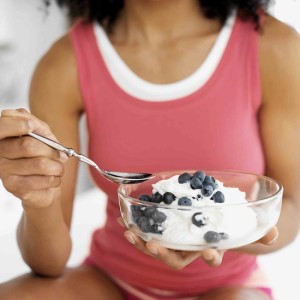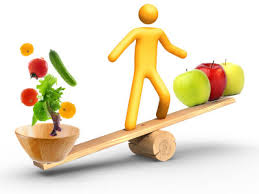PROTEIN, are you getting what you need?
 While it seems everyone can give you their take on high protein low carbohydrate diets, the confusion over just how much is best for the today’s average woman verses man, still seems to be a mystery for many folks. Just last week while I was doing some fact checking, I came across an article, written by a reputable expert/MD in which he delivered what I considered to be pretty reasonable guidelines and practical solutions that I mostly agreed with. I am leaving his name out since this poor Dr. was having his head served to him by his readers. After seeing the comments and how some were so brutal, others ridiculous and still more tooting their on horns (people please…) whilst bashing away on this Doc., I hesitate to given my “opinion”. I can only tell you what works for me and what I have experienced with my clients.
While it seems everyone can give you their take on high protein low carbohydrate diets, the confusion over just how much is best for the today’s average woman verses man, still seems to be a mystery for many folks. Just last week while I was doing some fact checking, I came across an article, written by a reputable expert/MD in which he delivered what I considered to be pretty reasonable guidelines and practical solutions that I mostly agreed with. I am leaving his name out since this poor Dr. was having his head served to him by his readers. After seeing the comments and how some were so brutal, others ridiculous and still more tooting their on horns (people please…) whilst bashing away on this Doc., I hesitate to given my “opinion”. I can only tell you what works for me and what I have experienced with my clients.
I want to address a specific request from a private client of mine. Her question today is this “I’ve been told a few different things on how much protein I should be getting in. My friend, who is a dietician had me off of all protein powders, drinks and bars about a year ago, and only had me getting my protein though my three meals. I did lose 5 pounds on her plan but… I really need to lose at least 10 pounds, which I did a year ago but gained it back. How much protein do you tell people?” Client- San Fernando Valley
To answer- While I do not necessarily agree with all of the previous recommendations given to this client, I do understand from the prospective of an RD what she was trying to accomplish- She was trying to steer this client toward eating whole foods and skip the packaged, and the protein powders, which be a whole other issue (more on protein powders later).
The Institute of Medicine recommends that adult women get “an average” of 46 grams of protein a day, while men should aim for 56 grams. That said, there is also a “range” that is dependent on various things including, activity level and general health. Another way to look at it about 15.0% of total daily caloric intake for women, verses 16% for men in the same age range. I included a chart below that will help you find your approximate range. Rice University suggests that if you weigh more and are more active, you may consume higher amounts and stay healthy. Aim for up to 0.6 to 0.9 grams per pound per day if you are a growing athlete or an adult building muscle mass.
For weight loss, protein should stay at the minimum and perhaps more depending on your lifestyle. The key in weight loss, maintenance or gain is the same. If you are trying to lose weight head to the higher end of the range offered on the chart below, and Do not let yourself get so hungry you would eat a shoe! I do not believe it skipping meals to lose weight, disappointment always follows when your body goes into defense mode to protect itself from starvation and you will gain every ounce and more back-just a fact!
It’s all about the quality. I mean All about it. Think close the earth, close to natural as possible every time you eat. If you eat beef, eat grass-fed, humanely raised, antibiotic free meat. Same goes for poultry. If you eat fish, do yourself and the sustainability of our oceans a huge favor and follow the seafoodwatch. They have an app that you can download for free and take it with you to the market. I cannot stress enough how dangerous eating fish ladened with mercury and other toxins is for your health.
For those eating a vegetarian and vegan diet, you can absolutely get your protein from greens, legumes, beans and a host of other non-animal products. The key is you have to be flexible and open to eating a good variety of non-animal proteins to stay in good health (see below).
In closing, I never recommend dieting; rather I prefer to focus on lifestyle upgrades. Treat your body as you would treat your very best friend in the world, with tender loving care, kindness and respect.
Read on for suggestions on good quality protein, links to reputable sources, recipes and a few charts for the visual folks out there like me.
1-Protein helps you feel fuller, simple as that. It takes longer to digest, making you feel satiated longer.
2-Eating protein within 30 minutes after a strength training or endurance workout, helps your muscles recover, repair and regenerate.
3-Your muscles don’t care if the protein comes from a hard-boiled egg, or a tuna burger.-Just keep it clean and lean baby!
4-A calorie is a calorie is a calorie! Too much is too much. Just because protein can help you lose weight does not mean eating more than recommended is a good idea. You will pack on unwanted weight if you eat too much.
5- While Protein Shakes Can be a wonderful way to get your daily protein, be careful with which ones you choose. Many are not all that healthy with lots of chemical additives meant to “mimic” protein rich foods. Further, if you are making protein smoothies and adding fruit,although tasty and they do have benefits, they also carry tons of added sugar. Lastly, I find my clients do not always feel satisfied and still eat on top of the already calorie dense shake, thereby packing on unwanted pounds.
6- An excess amount of protein puts a strain on your kidneys and liver and are among the most common of the other health risks.
7-Everybody needs to poop, and regularly. Too much protein combined with not enough fiber i.e. green fresh veggies, beans, legumes will cause constipation. Further, chronic constipation can lead to a higher probability of colon cancer!
8-Pay attention to how your body reacts when you add more protein and also to what kind of protein. Some people do not handle animal proteins as well as others, myself included. I can’t eat the stuff. I thrive on a pescetarian diet (fish, eggs, but no meat, pork, poultry). While others thrive on it. Get to know your body better!
9- According to an article published in 2006 in the “International Journal of Sports Nutrition & Exercise Metabolism,” very high-protein diets, which can be defined as diets that advocate eating more than 200 grams of protein daily, raise the risk of certain conditions. These include hyperaminoacidemia, which is an excess of amino acids;, hyperammonemia, which results in an excess of ammonia; hyperinsulinemia nausea from an excess of insulin; and even early death. Some negative effects, including beginning hyperaminoacidemia and hyperammonemia, are observable after just one meal of 40 grams of protein or more, but those effects only become chronic and severe over time.
 Choosing the Best Protein Sources
Choosing the Best Protein Sources
- Choose protein sources that are nutrient-rich and lower in saturated fat and calories, such as:
- Canned Tuna (I only recommend Safe Catch!) https://safecatch.com/
- Lean, organic, grass-fed beef meats
- Seafood-click before you pick-http://www.seafoodwatch.org/
- Beans
- Soy
- Low-fat dairy (stick with organic)
- Eggs-organic, range free, no antibiotics
- Nuts and seeds-walnuts are my favorite!
- Remember variety is King! Choose different protein sources to get the best of all sources.
Foods for thought
Here is a short-list of protein sources (count is in grams):
1/2 cup low-fat cottage cheese: 14
3 ounces tofu, firm: 13
1/2 cup cooked lentils: 9
2 tablespoons almond butter: 8
1 hard boiled egg: 6.29
1 cup sweet potato 2.9
½ cup green beans 2.1
One ounce of pumpkin seeds contains 9.35
Eight spears of this delectable veggie has 3.08
One cup cooked cauliflower = 2.28
Approx.. 28 peanuts dry roasted without salt = 6.71
One cooked cup oatmeal has a whopping 6.08
one ounce raw unsalted almonds (approximately 24 nuts) containing 6.03
One cup cooked spinach = 5.35
One cup of chopped broccoli = 5.7
Quinoa: All of the plants on my list that have preceded this one fall short in comparison to quinoa’s potential.* On its own it is a perfect protein and the king of all grains. It has the highest percentage of protein content at 16 percent per volume! This means that a measly ¼ cup (dry) quinoa has 6 grams** of protein. If you paired this grain with a couple of spears of asparagus and a beautiful cauliflower, broccoli and sprouted mung bean stir–fry, you would have an easy meal with 30 grams of protein or more!
How to figure it out:
Take your weight in pounds and divide it by 2.2 to figure out your weight in kilograms. Then multiply that number by 0.8 (not very active), 1.3 (active or pregnant), or 1.8 (extremely active), depending on how much exercise you get.
Take a look at the chart below the range of protein you should be eating each day. Note, the importance of determining your activity level. Basically, the CDC says if you don’t see your weight, just use the formula above to calculate your daily protein.
Click to open protein chart
Based on the numbers above, do you already get enough protein per day?

Resources and products- clean protein from companies I LOVE!
Vegetarian/Vegan http://www.sweetearthfoods.com/
http://www.organicpastures.com/landing/
 Great snack! – http://www.mysagegourmet.com/recipes/snacks/black-bean-tomato-avocado-salsa/
Great snack! – http://www.mysagegourmet.com/recipes/snacks/black-bean-tomato-avocado-salsa/
Year-round Salad– http://www.mysagegourmet.com/recipes/vegetables/stove-top-sweet-potato-salad/
Energy/Protein Smoothie: http://www.mysagegourmet.com/strawberry-chia-energyprotein-smoothie/
Fish/seafood: http://www.mysagegourmet.com/recipes/fish-and-seafood/
High protein/low carb black bean patties: http://www.mysagegourmet.com/recipes/quinoa-cakes-recipe/
Seafood choices-Balancing the benefits and the risks- http://iom.nationalacademies.org/reports/2006/seafood-choices-balancing-benefits-and-risks.aspx
http://iom.nationalacademies.org/
http://onlinelibrary.wiley.com/journal/10.1002/(ISSN)1097-0134
http://www.hsph.harvard.edu/nutritionsource/what-should-you-eat/protein//
Disclaimer: All health content on MySageGourmet.com and by Carol Takakura, is provided for general information only, and should not be treated as a substitute for the medical advice of your own doctor or any other health care professional. If you have any concerns about your general health, you should contact your local health care provider.




